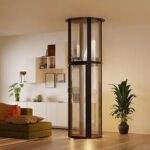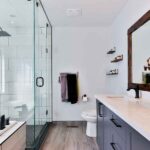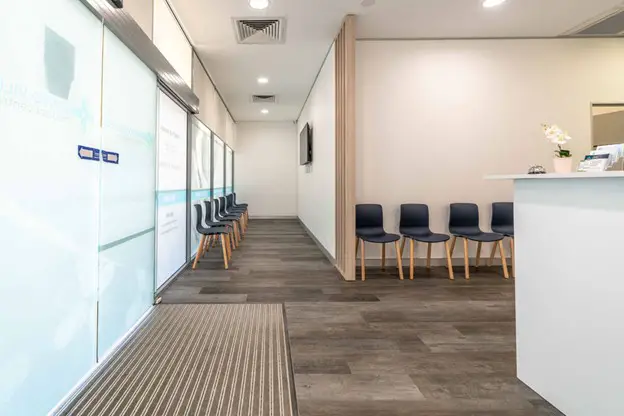Planning a medical fitout involves numerous considerations, with budgeting being one of the most critical. Whether you are establishing a new clinic or renovating an existing practice in Melbourne, understanding the costs involved and planning accordingly can help ensure your project runs smoothly. Here’s a guide to what you can expect when budgeting for a medical fitout.
1. Initial Consultation and Planning
The first step in any medical fitout is the initial consultation and planning phase. This involves meeting with architects, designers, and medical fitout specialists to discuss your needs, goals, and budget. During this phase, you’ll work out the layout, design elements, and functionality required for your medical practice.
In Melbourne, where the healthcare industry is both competitive and highly regulated, it’s essential to work with professionals who understand the specific requirements of medical spaces. The costs associated with this initial phase can vary but typically include fees for consultancy, design planning, and initial site assessments. You should expect to allocate a portion of your budget—typically around 5-10%—to this crucial planning stage.
2. Design and Layout Costs
The design and layout of your medical space are critical to its functionality and compliance with health regulations. This includes the architectural design, interior design, and the selection of materials and finishes. Factors such as the flow of patients, staff efficiency, and the type of medical services offered all influence the design.
Costs in this phase will vary depending on the complexity of the design, the quality of materials chosen, and any specialised requirements such as soundproofing, lighting, or air filtration systems. For medical fitouts in Melbourne, expect design and layout costs to account for approximately 20-30% of your total budget. This includes not only the design fees but also any custom joinery, fixtures, and fittings needed to create a functional and compliant space.
3. Construction and Fitout
The construction and fitout phase is where the bulk of your budget will be allocated. This involves the actual building work, installation of medical equipment, plumbing, electrical systems, and the final fitout of the space. In a medical fitout, specialised requirements such as lead-lined walls for radiology rooms, medical gas lines, and hygiene considerations add to the complexity and cost.
For a comprehensive medical fitout in Melbourne, construction costs can account for 40-50% of the total budget. This includes labour, materials, and any additional structural work needed to meet compliance standards. It’s also important to factor in potential unexpected costs, such as site complications or changes in regulations, which could impact the overall budget.
4. Compliance and Certification
Compliance with health and safety regulations is non-negotiable in any medical fitout. In Melbourne, strict guidelines govern everything from patient privacy to infection control, and your fitout must meet these standards. Costs in this area include obtaining the necessary permits, inspections, and certifications required to operate a medical practice.
While these costs may seem secondary, they are vital and should not be underestimated. Typically, compliance and certification can account for around 5-10% of the total budget. Working with a medical fitout company that understands Melbourne’s regulations can help streamline this process and avoid costly delays.
5. Furniture, Fixtures, and Equipment (FFE)
The final stage of a medical fitout involves the selection and installation of furniture, fixtures, and equipment (FFE). This includes everything from waiting room chairs and reception desks to specialised medical equipment and IT systems. The quality and durability of these items are important, as they need to withstand the demands of a busy medical practice.
For a medical fitout in Melbourne, FFE can account for around 15-20% of your total budget. It’s important to invest in high-quality, durable items that enhance both the functionality and aesthetics of your practice. Additionally, consider the long-term costs of maintenance and potential upgrades when planning your budget.
6. Contingency Fund
No matter how well you plan, unexpected costs can arise during a medical fitout. It’s wise to set aside a contingency fund, typically around 10-15% of your total budget, to cover any unforeseen expenses. This could include anything from unexpected structural issues to changes in project scope.
Conclusion
Budgeting for a medical fitout in Melbourne involves careful planning and consideration of various factors, including initial consultation, design, construction, compliance, FFE, and a contingency fund. By understanding what to expect at each stage and working with experienced professionals, you can ensure that your medical fitout is completed on time, within budget, and to the highest standards. With a well-planned budget, your medical practice will be set up for success, providing a functional, compliant, and welcoming environment for patients and staff alike.

 How to Choose the Right Window Replacement Contractor
How to Choose the Right Window Replacement Contractor  The Best Aircon servicing Singapore Maintaining Coolness by Performing Top-Quality Maintenance
The Best Aircon servicing Singapore Maintaining Coolness by Performing Top-Quality Maintenance  Why Columbus Homeowners Are Falling in Love with Epoxy Garage Floor Coatings
Why Columbus Homeowners Are Falling in Love with Epoxy Garage Floor Coatings  Flood Cleaning Services in Fort Worth, TX: Essential Steps to Restore Your Home
Flood Cleaning Services in Fort Worth, TX: Essential Steps to Restore Your Home  The Benefits of Caesarstone Quartz: Style, Strength, and Sustainability
The Benefits of Caesarstone Quartz: Style, Strength, and Sustainability  Are Home Elevators Worth the Investment? A Canadian Homeowner’s Guide
Are Home Elevators Worth the Investment? A Canadian Homeowner’s Guide  5 Common Gutter Problems That Gutter Guards Can Solve
5 Common Gutter Problems That Gutter Guards Can Solve  How a Whole-House Humidifier Can Help With Your Health
How a Whole-House Humidifier Can Help With Your Health  Master Bathroom Remodeling: Essential Tips for a Stylish Upgrade
Master Bathroom Remodeling: Essential Tips for a Stylish Upgrade 